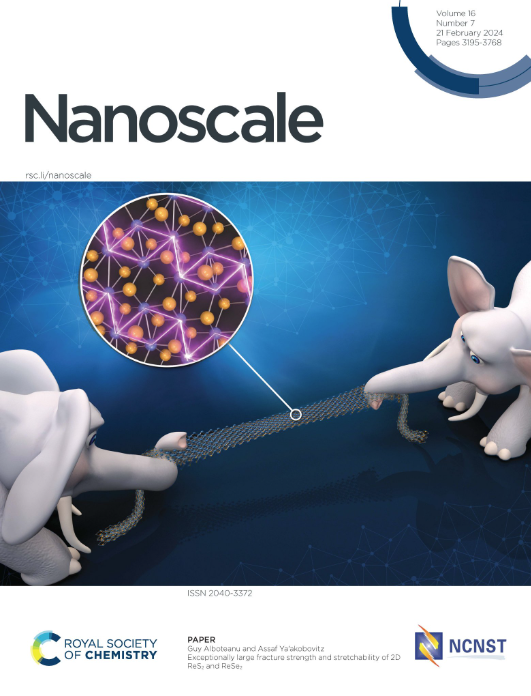Computational modelling of nanoparticle catalysis
IF 5.8
3区 材料科学
Q1 CHEMISTRY, MULTIDISCIPLINARY
引用次数: 0
Abstract
In recent years computational methods have complemented a range of experimental techniques to enrich our understanding of chemical systems. This is particularly true in catalysis, as it is possible to gain atomic level insight into the active sites, adsorbate interactions, and the potential mechanisms occurring. Nanoparticles or nanoscale materials have become increasingly popular as catalysts in recent years, requiring additional computational considerations. In this review we present an overview of existing and emerging computational methods in nanocatalysis and the unique catalytic behaviour that is revealed by these methods. We first discuss numerical tools used to calculate structures, energies and rates of catalytic reactions as well as different approaches to representing active sites of nanoparticle catalysts. We then focus on alloy and supported nanoparticle catalysts and explore how computational methods can reveal the more complex behaviours of these catalytic systems. Finally, we highlight some of the additional challenges in moving towards realistic systems, such as the dynamic nature of catalysts, the role of solvent, ensemble effects, the distribution of active sites and influence of defects, which also have the potential to change the observed catalytic properties. We also present a discussion on emerging machine learning approaches as applied to nanocatalysis. Overall, this article aims to highlight the various methods available to model nanocatalysis and the catalytic insights that can be gained from a computational approach, using a range of examples from recent literature.纳米颗粒催化的计算模型
近年来,计算方法补充了一系列实验技术,以丰富我们对化学系统的理解。在催化方面尤其如此,因为它有可能获得原子水平上对活性位点、吸附物相互作用和发生的潜在机制的了解。近年来,纳米颗粒或纳米级材料作为催化剂越来越受欢迎,需要额外的计算考虑。在这篇综述中,我们介绍了纳米催化中现有的和新兴的计算方法的概述,以及这些方法揭示的独特的催化行为。我们首先讨论了用于计算结构、能量和催化反应速率的数值工具,以及表示纳米颗粒催化剂活性位点的不同方法。然后,我们将重点放在合金和负载纳米颗粒催化剂上,并探索计算方法如何揭示这些催化系统的更复杂行为。最后,我们强调了在走向现实系统的过程中一些额外的挑战,如催化剂的动态性质、溶剂的作用、系综效应、活性位点的分布和缺陷的影响,这些也有可能改变观察到的催化性质。我们还讨论了应用于纳米催化的新兴机器学习方法。总的来说,这篇文章的目的是强调各种可用的方法来模拟纳米催化和催化的见解,可以从计算方法中获得,使用一系列的例子从最近的文献。
本文章由计算机程序翻译,如有差异,请以英文原文为准。
求助全文
约1分钟内获得全文
求助全文
来源期刊

Nanoscale
CHEMISTRY, MULTIDISCIPLINARY-NANOSCIENCE & NANOTECHNOLOGY
CiteScore
12.10
自引率
3.00%
发文量
1628
审稿时长
1.6 months
期刊介绍:
Nanoscale is a high-impact international journal, publishing high-quality research across nanoscience and nanotechnology. Nanoscale publishes a full mix of research articles on experimental and theoretical work, including reviews, communications, and full papers.Highly interdisciplinary, this journal appeals to scientists, researchers and professionals interested in nanoscience and nanotechnology, quantum materials and quantum technology, including the areas of physics, chemistry, biology, medicine, materials, energy/environment, information technology, detection science, healthcare and drug discovery, and electronics.
 求助内容:
求助内容: 应助结果提醒方式:
应助结果提醒方式:


